HortResearch Touts Red-Fleshed Apple
Came across this tonight:
HortResearch develops antioxidant-rich red-fleshed apple
HortResearch is the privatized national horticultural research agency in New Zealand (why so many countries have decided to do that is beyond me...isn't the point of a national research agency to do the type of research no private entity would find economically attractive?). A colleague of mine recently visited them, and they're really hyped up about this red-fleshed apple. They seem to be promoting it as though no one had ever seen a red-fleshed apple before, which is hardly the case. The trait has been known at least as early as the 1930's, as Albert Etter and several state experiment stations released a number of red-fleshed cultivars (there's a list, probably not exhaustive, here.) I'm pretty sure it's a dominant trait, too, so unless there are some unfortunate linkages it shouldn't be too hard to breed for.
Now, they like to claim that the breeding program was driven by nutritional goals. That might well be, I suppose, but I suspect it is a case of searching for justification after the fact (which is fine, don't get me wrong). Apple breeding is a long, slow process, and I would guess any selection nearing release now is from crosses made long before the anthocyanin craze in fruits began. Maybe they were prescient, or maybe they just got lucky. If I had to guess, breeders were messing around with the red-flesh trait basically because it's cool (and it is, be honest), and now that they have it in the breeding program and a justification has appeared, they've decided to promote it that way.
Fine by me, I guess. Just seems to me that if growers thought there was a market for red-fleshed apples, they have cultivars to do it with already. But the New Zealand folks have a mighty impressive history in marketing fruit, so we'll see how this shakes out.
Update: I found this article, which says they started work on this in 1998. They attribute their rapid success to "Smart Breeding", possible because of their EST sequencing. Once again, I'm not sure I buy it. They claim to have identified the genes responsible for red flesh, but even if they have, the main advantage this would give you is an ability to pick out red-fleshed individuals before they fruit. This is nice to be able to do, but it doesn't necessarily speed things up, because you still have to be able to evaluate taste, texture, skin color, resistance to fruit diseases, etc. If all they care about is red flesh, then how is the result better than existing red fleshed cultivars? I don't buy that these genetic tools (at this stage, anyway) can allow the development of a quality apple cultivar, something that typically takes 25+ years, in only 8 years. Call me a skeptic, I guess.
Update 2: I also found this page describing red flesh apple cultivars, which mentions 'Surprise', which dates at least back to 1831. (The other list has this as an Albert Etter cultivar, but I'm pretty sure it's wrong...somebody is, because that long pre-dates him.)



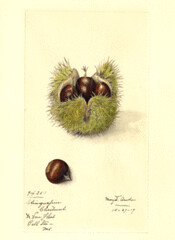
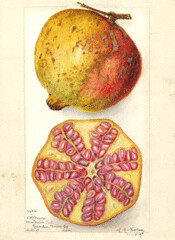

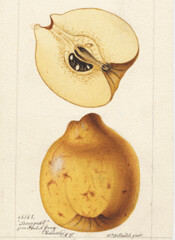




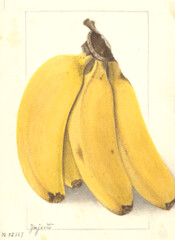

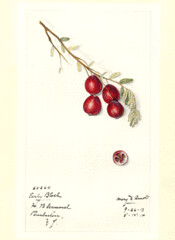
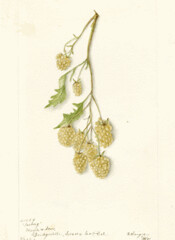
5 Comments:
"isn't the point of a national research agency to do the type of research no private entity would find economically attractive?"
Indeed. But this isn't "privatized" in the sense of having been turned into a for-profit company. HortResearch is still wholly owned by the NZ government, and partly funded through the government budget. But it also earns revenue from commercial marketing of its products. Since NZ's "free market" craze of the roughly 1984-93 period--initiated by the Labour party, in fact--NZ has created several Crown companies like this. They used to be directly under government ministries, but now have autonomy from day-to-day management by the government. But "private" is a bit misleading.
On the red apples, I have always wanted to try growing one. For some reason, I have not gotten around to it (not counting Pink Pearl, which I have and enjoy). Thanks for the linked cultivar list.
Thanks for clarifying... How does this compare to East Malling Research in the U.K.?
All I know is that somewhere along the line the horticulture researchers in NZ started acting a lot more like the people I deal with in private companies and less like the folks I deal with at, say, the USDA. I find it a little irritating (though I don't hold it against them personally...they seem to be nice enough folks). Although the USDA is an exception, the state agricultural experiment stations all derive substantial amounts of money from patents and the like, and yet avoid the attitude I get from HortResearch. By making them independent of government management, they wind up becoming an entity primarily concerned with it's own perpetuation, not with the needs of NZ agriculture.
I went to a number of scientific meetings where some one from HortResearch stood up and went on about resources they were developing, and then revealed they weren't making them publicly available. Finally at one some one actually got up and said, basically "Why should I care how many ESTs you've sequenced if they aren't available? They might as well not exist as far as I'm concerned." To their credit, many thousands of those ESTs were available in public databases within months after that, but still, it's frustrating to be doing research at a public institution, and having to deal with that sort of thing.
I'd just like to temper my last comment a bit by saying A) Let me make clear that my actual dealings with HortResearch are pretty minimal and that I'm basing this mostly on the impression I've gotten from their presentations and publicity, and B) that it seems as though the system would encourage them to put the needs of HortResearch before the needs of NZ agriculture...I don't have enough evidence one way or another to know if this happens. I do know other cases with similar organizations where it does happen, but I won't get into those...
Oh, and glad the cultivar list was interesting to you. Don't want to lose sight of what this was really about.
I have no idea what the chill requirements are on any of the red-flesh apples...they mostly came from rather northerly areas (Geneva, NY, the Dakotas, Michigan, etc.) I forget where Albert Etter was working...northern California I think.
Do you grow any other apples? I forget...
2015-10-10 zhengjx
ugg boots
ugg boots
Ray Ban Sunglasses Outlet Store Online
coach factory outlet
toms outlet
coach factory outlet online
Abercrombie & Fitch Clothing With Big Discount
Cheap Jordan 13 Shoes For Sale Free Shipping
Ugg Boots,Ugg Boots Outlet,Ugg Outlet,Cheap Uggs,Uggs On Sale,Ugg Boots Clearance,Uggs For Women
Louis Vuitton Outlet Handbags Pursers In USA
michael kors handbags
ugg boots sale
ralph lauren
louis vuitton
Kobe Shoes,Kobe 9,Kobe 8 Discount
Mont Blanc Pens For Sale
Cheap Michael Kors Handbags On Sale
Christian Louboutin Outlet For Women
Cheap Louis Vuitton Handbags Luggage Bags Sale
michael kors outlet
abercrombie & fitch
coach outlet store online
Louis Vuitton Outlet Authentic Handbags Discount
fitflops
Hollister UK Clothing Store
canada goose
michale kors outlet
Christian Louboutin Shoes Outlet Sale Cheap Price
Canada Goose,Canada Goose Outlet,Canada Goose Jackets,Canada Goose Sale
Cheap Jordans Shoes For Sale
Post a Comment
<< Home